Lady of the depths
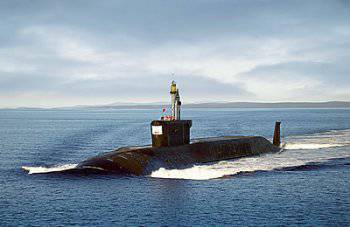 Nuclear-powered submarines remain in the arsenals of only the most militarily powerful states.
Nuclear-powered submarines remain in the arsenals of only the most militarily powerful states.Born as a class of warships in the XIX century, recognized in the course of the two world wars as a full-fledged means of naval warfare, in the postwar period, the submarines made perhaps the biggest breakthrough in building performance compared to any other warships. Modern submarines are designed to solve a wide range of tasks - from tactical to strategic. This makes them one of the most important means of warfare in general.
Today, submarines of various classes are in the Navy more than 30 countries of the world. At the same time, competence in construction, and even more so in the development of new types of submarines, is still possessed by a fairly small number of states, world leaders in the field of creation and production of high-tech military equipment.
EXPENSIVE GRAND PAYMENT
Submarines with nuclear power, being the most expensive and complex combat units among all submarines, still remain in the arsenals of only an extremely narrow circle of the most militarily strong states. Currently, nuclear submarines are in operation in five countries of the world: Russia, the USA, Great Britain, France and China. In addition, it has already been built and is undergoing tests (although it has not yet been commissioned fleet) The first nuclear submarine of the Indian Navy, and, finally, the development of its own nuclear submarines are Brazil and Argentina.
Nuclear submarines are divided into several main subclasses. NPS - carriers of strategic ballistic missiles (RPLSN, SSBN) are designed to launch a nuclear strike on the enemy's territory. They are the largest and most expensive submarines. As a rule, these submarines carry 12 to 24 ballistic missiles, and torpedoes and torpedoes are used as defensive and auxiliary weapons. They are distinguished by increased secrecy.
Multipurpose submarines - carriers of cruise missiles (MTSAPL, SSGN, PLA) - the most common subclass of submarines. They can solve both tactical and operational-strategic tasks. The main purpose is the fight against enemy surface ships and submarines at sea, as well as striking cruise missiles at coastal targets. Multipurpose submarines are widely used after the creation of cruise missiles launched from torpedo tubes, such as Harpoon, Exocet, Tomahawk, Vodopad, Granat, etc. Separately allocated domestic submarines - carriers of heavy cruise missiles "Granit", specially designed to deal with large enemy surface ships. Currently this branch is represented by the submarine of the 949A project.
Pure torpedo submarines (PLA) are the “outgoing” subclass of atomic submarines designed to combat sea targets using torpedoes.
Currently in the world are built mainly multi-purpose submarines. They are in shipbuilding programs of all the countries that own submarines. Perhaps the only exception is the Arihant submarine of the Indian Navy. Specialists continue to argue whether the first Indian nuclear submarine and its planned sisterships are strategic or, nevertheless, multi-purpose submarines.
Characteristic features of the fourth-generation modern submarines are the following:
- equipping with integrated combat information and control systems (BIUS), combining multifunctional digital sonar systems (GAK) and torpedo (rocket) shooting control posts;
- installation on the submarine antennas SAC, allowing to "hear" the enemy with the whole body, increasing the energy intensity of the SAC. As a result, a sharp (by several times compared to the third, and an order of magnitude compared to the first and second generations) increase in the awareness of the tactical situation of the command of the Premier League;
- the initial equipment of all new nuclear submarines with cruise missiles, an increase in the range of weapons;
- equipment of most submarines with pump-type propellers, a sharp (two to three times) noise level drop at cruising speeds (15-25 knots);
- equipping the boats with nuclear reactors of a new generation with the core service life increased to 15-20 years.
These technical solutions allowed to increase the separation of the capabilities of the submarines from their non-nuclear counterparts, especially in such indicators as the duration of cruising on cruising lines, firepower, information content of the SJC (due to immeasurable superiority in power capacity) and a number of other characteristics.
MODERN PROGRAMS OF NPS CONSTRUCTION
Russia
The basis of the nuclear submarine of our country fleet currently still constitute a submarine Soviet-built: RPLSN project 667BDR (4 units.) And 667BDRM (6 units.) PLARK project 949A (8 units.), SSN 971 projects (12 units.) , 945 (3 units), 671 PTMK (4 units).
In the second half of the 2000's. After a long break, our country has resumed the construction of new submarines in series. Up to this point, the submarines built in the USSR were completed. The geography of the construction of a nuclear submarine narrowed sharply: from four centers of submarine shipbuilding (St. Petersburg, Nizhny Novgorod, Severodvinsk, Komsomolsk-on-Amur), laying and construction of new submarines is carried out only in Severodvinsk at PO Sevmash. This situation, apparently, will continue in the next decade.
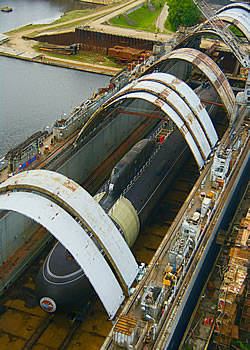 Multi-purpose submarine "Severodvinsk" in the Sukhona docking station
Multi-purpose submarine "Severodvinsk" in the Sukhona docking stationCompared to the end of the 80-s, the number of submarines under construction and their number has also decreased dramatically. At the present time the construction of the RPPLS of the 955 "Borey" project and the MTSPL of the 885 project, the cipher "Ash" are underway. According to a number of specialists, the current pace of construction of new submarines threatens a sharp weakening of the Russian Navy sub-alloy over the next 10-15 years.
The development of the RPLSN project began in the USSR at the end of the 70s. The lead ship of the 955 project, called “Yuri Dolgoruky”, was laid in November of 1996, but almost immediately the construction was complicated by a number of problems. Firstly, there was a lack of sufficient funding, and secondly, the main armament of the promising RPLSN was not ready. Initially it was assumed that these missile carriers would receive the D-19UTTH complex with the R-39UTTH “Bark” SLBM. However, after the development of the Bark was stopped in 1998, the project was reworked to equip the D-19M missile system with the Bulava R-30 SLBM.
Currently, the head boat "Yuri Dolgoruky" and the first production "Alexander Nevsky" are launched. The third RPLSN "Vladimir Monomakh" is under construction. The submarines themselves are rated as modern, with powerful underwater acoustics and high secrecy. According to some information, the 955 and 885 projects are created in accordance with the concept of the “base model”, when the main structural elements of the submarine, the main power plant and the general ship systems are almost the same, and the differences lie in the target modules of the main weapons. This approach confronts designers with a number of complex tasks, while at the same time allowing them to significantly simplify the infrastructure of submarine bases, reduce the range of maintenance and repair complexes, reduce the cost of building nuclear submarines and facilitate their development by crews.
The lead ship of the 885 project “Ash”, the development of which, like the new RPLSN, began at the end of 70, was planned to be laid at the turn of 80-90, but the financial constraints and disintegration of the USSR delayed the start of construction 1993 d. Then stretched a long epic of its construction. In 1996, work at Severodvinsk — that is, the name of the promising MCCLP — was actually stopped due to lack of funding.
Initially it was assumed that the lead ship would be commissioned in 1998. But in 1998, the dates shifted to the beginning of 2000, then on 2005, 2007 ... Works on the ship resumed, according to some information, only in 2004-2005 yy As a result, the head nuclear submarine missile cruiser “Severodvinsk” was launched in 2010, and its commissioning should be expected not earlier than 2011. In contrast to “Yuri Dolgoruky”, which so far only plans to receive Bulava, “ Severodvinsk ”will not remain unarmed - all its cruise missiles and torpedoes are already mastered by industry.
During the completion of the project were made significant changes. The equipment laid by the designers at the end of the 80s was outdated and it was pointless to finish building the cruiser with it.
"Ash" combines the capabilities of the "anti-aircraft" SSGN of the 949A project and the "anti-submarine" ICNF of the 971 project, which makes it possible to optimize the program of re-equipment of the naval submarine forces. At the same time, the new boat turned out to be quite expensive. A number of experts believe that it would be reasonable to confine ourselves to two or three boats of the 885 project and to launch construction of cheaper and smaller submarines, just as in the United States instead of the expensive Seawolf, the more compact and not so prominent TTX boat Virginia. However, the latter almost caught up with the Sea Wolf.
USA
The United States currently continues to maintain its submarine forces at a very high level. The fleet includes the Ohio 14 SSBNs (the 4 first submarines of this project were converted into cruise missile carriers), the Seawolf 3 submarines, the Los Angeles submarines and the 44 newest Virginia submarines. Ohio-type SSBNs are supposed to remain in the fleet until the 7s, when they are being replaced with new submarines, the development of which has already begun. Los Angeles-type submarines are gradually being withdrawn from the fleet, giving way to more modern Virginia-type submarines. It is assumed that before 2040 all Los Angeles-type boats will be withdrawn from the Navy, and the number of multi-purpose submarines will decrease to 2030 units.
Maryland SSBN Ohio type US Navy
Multi-purpose submarine North Caroline type Virginia US Navy
The design and construction of the US Navy submarine submarines is currently concentrated in the Electric Boat division of General Dynamics Corporation and at the Newport News Shipbuilding Shipyard of Northrop Grumman Corporation. In the construction for the US Navy today is only one type of nuclear submarines - type Virginia.
The development of these multi-purpose submarines began at the end of the 80s, when it became clear that promising Seawolf-type boats were too expensive, even by the standards of the US Navy. Their cost, originally declared within $ 2,8 billion, eventually grew to almost $ 4 billion. However, it was not possible to save money - the first submarines of the Virginia type cost the same $ 2,8 billion per unit to taxpayers.
Already during the design of Virginia, it became clear that the old concept, focused primarily on the opposition of the Soviet Navy, no longer makes sense. Therefore, boats from the very beginning were designed to perform a wide range of tasks, including the provision of special operations. For this purpose, submarines of the Virginia type have the appropriate equipment: uninhabited submersibles, an air lock chamber for diving, a deck mount for a container or an ultra-small submarine.
Like advanced Los Angeles-class submarines, these boats are equipped with vertical launchers for launching Tomahawk cruise missiles. The main version of the Tomahawk CD for the new submarine is the latest modification of this BGM-109 Tomahawk Block IV rocket, which allows the aircraft to be redirected in flight. The missile is capable of locking in anticipation of an order to attack, which dramatically increases the flexibility of this weapon system.
SSBN Vanguard Royal Navy UK
United Kingdom
The program of construction of the submarine fleet of Great Britain today raises many questions, including in this country itself. First of all, the possibility of reducing the number of combat-ready SSBNs in connection with the general course of Britain to reduce its own nuclear arsenal is being discussed. At the same time, the SSBNs themselves remain the only element of the British nuclear deterrence system. Currently, in the construction for the fleet of Her Majesty is only one series of multipurpose submarines - Astute. Their need is clear: multipurpose submarines are supposed to be used to perform a variety of tasks, including support for special operations. The British nuclear submarines are quite “conservative” in terms of armament: unlike the Russian or American ones, they do not carry vertical launchers for the CD. To launch rockets, if necessary, use torpedo tubes.
The design of boats in the UK is concentrated in one center - BAE Systems Submarine Solutions. After merging with Vickers Shipbuilding and Engineering, the new center became the only developer and builder of nuclear submarines in the UK. In the near future, this monopoly will remain unchanged.
 Astute Royal Navy UK's newest multipurpose submarine
Astute Royal Navy UK's newest multipurpose submarineFrance
Among European NATO member countries, France has the strongest fleet, including the Navy’s traditional rival neighbor, the United Kingdom. The submarine fleet of France currently consists of 10 nuclear submarines, four of which are the newest SSBNs of the type Le Triomphant, and another six are submarines of the Rubis type, famous for being the smallest nuclear-powered ships in the world — the 2600 and displacement. As in the UK, in France, SSBNs are the basis of nuclear deterrence forces. The construction of boats such as Le Triomphant has been underway for the last 20 years and has been one of the main and most expensive French military programs. With the completion of the construction of new SSBNs, France has switched to updating the fleet of non-strategic submarines, laying a series of submarines of the Barracuda type.
Of the leading nuclear powers, France started the construction of a new generation of submarines of the latest generation: the Barracuda-type submarine, named Suffren, was laid in 2007. Being twice as large as Rubis (5300 t), it is, nevertheless, the smallest submarine in its generation , yielding in size and displacement and Virginia, and Astute, and Severodvinsk. The small size of the boat can reduce the cost of construction.
From Rubis, the new boat inherits the design of the main power plant with full electric propulsion, which significantly reduces the noise at medium speeds (10-20 knots) compared to analogues equipped with classic turbo gear units.
Suffren, like the rest of her peers, is a multipurpose boat focused on a wide range of tasks, including special operations. For this purpose, space is provided for a group of light divers and a docking station for underwater vehicles. The French submarine, like the British, will not be equipped with vertical launchers for cruise missiles. All types of weapons, including cruise missiles, will be launched through torpedo submarines.
SSBN Le Triomphant French Navy
The new construction program has a very long implementation period: six boats are planned to be commissioned in 10 years. In this case, the head boat, laid down in 2007, should be put into operation in 2017.
The design and construction of nuclear submarines in France, as in other leading countries, is monopolized: DCNS is the main shipbuilding company in the country, offering projects of ships of all major classes.
Nuclear submarine Perle type Rubis French Navy
China
China acquired its own nuclear submarine fleet later than all the other great powers. The formation of the nuclear subsurface in this country was quite difficult. Thus, the development and construction of the first Chinese nuclear submarines of the 091 project (Han type) were accompanied by considerable difficulties as engineering ones — the creation of nuclear power submarines for China of the 70s of the last century was very difficult as well as political — among the designers were actively looking for “enemies” people. " For these reasons, the first Chinese nuclear submarines did not become full-fledged combat units. They are distinguished by high levels of noise, poor characteristics of sonar equipment and an insufficient level of bio-protection. The same applies to the SSBN project 092 (type "Xia"). The only submarine of this type in service during the 30 years has made only one entry into combat service, having spent a significant part of the career in repairs. The second bomber type "Xia", according to some reports, was lost as a result of the accident in 1987.
The construction of the SSBN of a new project, also known as the “Jin” type, began in 1999. There is little information about it - China classifies its developments in this area almost steeper than the USSR. This is a fairly compact submarine boat with a displacement of less than 10000 tons, armed with twelve ballistic missiles with a firing range of more than 8000 km. Thus, the Jin-class boats became the first China-based SSBNs capable of striking the United States while in the western Pacific under the protection of their own fleet and air force. Experts believe that China plans to get 5 SSBNs of the “Jin” type so that in the next decade to proceed to the construction of promising SSBNs of the “Tang” type (096 project) that have missiles onboard the 24. Thus, it can be stated that there is a steady tendency of increasing the significance of the NSNS in the Chinese nuclear triad.
SSBN type 094 PLA Navy
Problems with the operation of Han-type boats prompted China to develop a more sophisticated project, which received an 093 index (Shan type). The construction of the head boat of the new type began in 2001. The submarines of the 093 project, although larger than Han-type boats, are also quite compact and feature more advanced equipment. 2006 to 2010 Two new submarines were put into operation, but, like their predecessors, problems arose during the operation of these submarines. According to the available scarce information, they are also associated with the noise of the power plant and the capabilities of the equipment. As a result, development of a modified project, designated as 095, which, while maintaining the basic dimensions and performance characteristics of the 093 project, would have become much quieter and more reliable, immediately began in China. Construction of new submarines should begin in the coming years.
As in the leading nuclear powers, the development and production of nuclear submarines in China are concentrated in the same hands: the main builder of ships of this class is the Bohai shipyard in the Yellow Sea.
It is difficult to say how quickly China is able to overcome its lag in the creation of full-fledged submarines, measured in decades, but, in any case, the development of new and new submarine projects demonstrates a persistent desire to bridge this gap.
Multipurpose submarine type 093 Navy PLA
India
India has long shown an interest in building submarines. The first nuclear submarine in the Navy of this country was the K-43 submarine leased from the USSR, which received the name Chakra. Indian flagged for four years - from December 1984 to March 1989, the boat became not only a forge of personnel for the Navy of this country - several people from the crew of the boat reached the admiral ranks, but also a source of valuable technical information.
This information was used by India to create the first submarine of its own project, named Arihant ("Killer of enemies"). About the new acquisition of the Indian fleet, almost nothing is known except that the main Arihant submarine was launched in July 2009, and its main armament consists of Sagarika tactical missiles with a range of 700 km. In general, the boat combines the features of a multi-purpose submarine and SSBN, which is logical in the context of the limited capabilities of the country. At the same time, India does not refuse foreign aid either - for example, from renting the Russian Nerpa submarine of the 971 project.
Nuclear submarine Arihant Navy of India
Brazil and others
Brazil has not yet entered the circle of countries possessing nuclear submarines. But this country is developing its own submarine. Local shipbuilders rely on the French-Spanish project of the Scorpene diesel-electric submarine, which uses a number of technologies borrowed from the advanced Barracuda submarine. The project implementation dates are not yet announced, but Brazil is unlikely to receive the first submarine before 2020.
Recently there have been reports that Argentina plans to acquire atomic submarines. As a submarine, a diesel-electric submarine of the German design is supposed to be completed.
NXL U31 type 212A Navy of Germany
IMPRESSIVE OPPORTUNITIES AT A STRONG PRICE
The nuclear submarine fleet was and remains an expensive toy. Political restrictions practically exclude the possibility of free sale of nuclear submarines in the international arms market. Submarines with diesel power plants, thus, remain the only option for completing submarine forces for most fleets of the world.
In the midst of the Cold War, diesel submarines were considered the “weapon of the poor.” They were much cheaper than the Premier League and just as much inferior to them in combat capabilities. The short cruise range “in silent mode” on electric motors, high noise level when moving in the RDP mode (diesel operation under water) and other drawbacks made diesel boats “second-class submarines”.
The most characteristic representatives of the new generation of diesel-electric submarines, which are now often called non-nuclear submarines (NNS), are the Russian submarines of the 877, 636 and 677 projects, the German 212 and 214 types, and the French-Spanish type Scorpene.
Non-nuclear submarines got rid of the status of second-class submarines after the end of the Cold War. They are characterized by low-noise engines, high-capacity batteries, auxiliary air-independent power plants, automatic battle control systems and other improvements.
Papal NAPL type 214 Greek Navy
For a number of parameters, non-nuclear submarines approached and even surpassed submarines with nuclear reactors. First of all, it concerns the stealth - modern NNS on electric motors are able to move underwater much quieter than nuclear submarines with turbine installations, which, however, retain an overwhelming superiority in the duration of scuba diving, especially at high speeds.
Third-generation submarines are equipped with automated combat control systems that combine detection and control systems for submarine weapons. Unlike atomic multi-purpose submarines, the detection means of which is focused primarily on underwater targets, mainly anti-ship targets are assigned to naval submarines.
One of the features of the modern market of non-nuclear submarines is a broad international cooperation in the design and construction of submarines. Own construction of non-nuclear submarines without the involvement of foreign components are currently only Russia and Germany. The rest of the countries building submarines, attract assistance from abroad in the form of the purchase of licenses, equipment or joint development projects.
Non-nuclear submarines are cheap and at the same time extremely effective means of warfare. The cost of one naval base, depending on the project and equipment, is $ 150-300 million (the price of a modern atomic multi-purpose submarine is in the range of $ 1,2-2,5 billion). Their armament makes it possible to combat surface combat ships and submarines, to counteract transport operations and landing operations of the enemy, to carry out mine settings and special operations. Armed with torpedoes and anti-ship missiles, a submarine with the necessary food and water reserves is capable of acting alone against superior enemy forces.
As a result, the demand for new and used submarines continues to be high. The most actively acquire submarines of the Navy countries of the Asia-Pacific region. After the reduction at the end of the last century, the construction of submarines in Europe again intensified. The newest submarines are not only weapons, but also a symbol of prestige, the same as aircraft carriers in the surface fleet.
Diesel Carrera Type Scorpene Navy of Chile
The circle of exporters of diesel submarines is currently extremely limited and in fact is limited to three countries: Russia, Germany and France. Russia offers on the market, mainly the time-tested 636 project - the development of the famous Varshavyanka, Germany - the 214 project, the export version of the U-212 submarines being built for the German Navy and Italy, France - the Scorpene project created jointly with Spain.
Germany, whose submarines are considered the best submarines of the new generation, retains leadership in the international submarine market. According to TSAMTO, in 2006-2009. 11 German-made naval structures for more than $ 3 billion were shipped for export, the order portfolio for 2010-2013 was delivered. makes nine new submarines worth $ 3,826 billion
Russia occupies the second position: in 2006-2009. two submarines delivered to Algeria, in the next three years, six more boats to be transferred to the Vietnamese Navy. A contract is being prepared for the supply of Russian submarines to Indonesia. The top three world leaders, according to TSAMTO, is France. In 2006-2009 Three NNLs worth $ 937 million were shipped abroad, in 2010-2013. four new boats worth almost $ 2 billion should be sold
It should be noted that the export version of the newest Russian submarine of the 677 project has not yet entered the market. This is largely explained by the technical problems that Russia faced during the construction and testing of the St. Petersburg head submarine. As a result, the 636 project is moving not only to the external, but also to the domestic market: three boats of this type have been ordered for the Russian Navy.
In the future, the demand for submarines will grow, as will the importance of the maritime sector of the arms market as a whole. One of the main reasons for this growth is the increase in the economic value of the oceans. The growth of the world's population, the gradual depletion of natural resources on the continents and the development of technology lead to a more active development of the biological and mineral resources of the shelf. The growth of the volume of international maritime transport also has its effect. The result is political disputes over certain areas of the sea surface and the seabed, over key islands and straits. Under these conditions, states seeking to protect their interests at sea rely on the navy, which over the centuries of its existence has proved its effectiveness as a fighting force and an instrument of political influence.
- Ilya KRAMNIK
- http://oborona.ru"rel =" nofollow ">http://oborona.ru
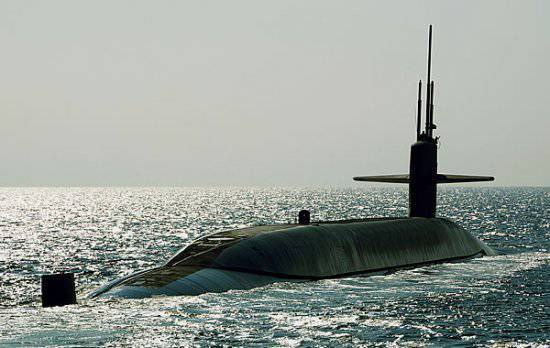
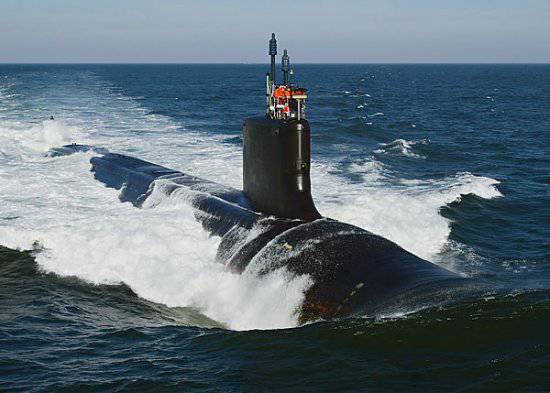
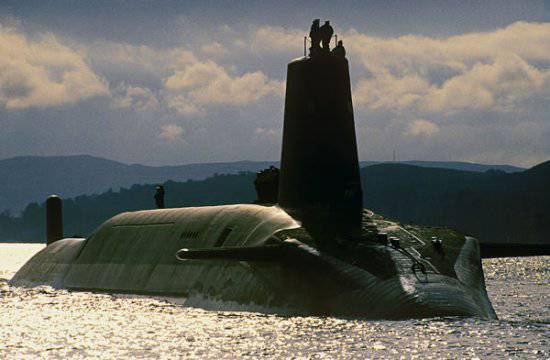
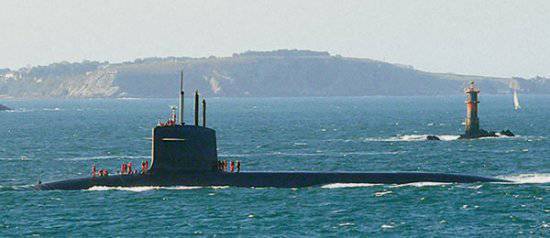
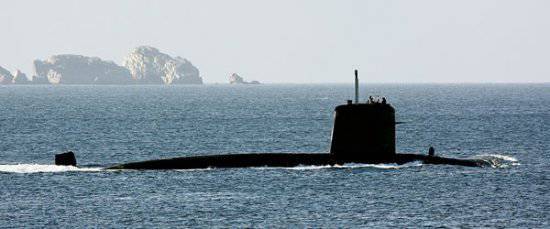


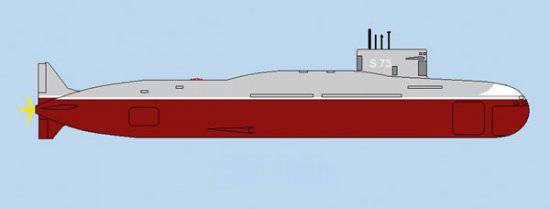
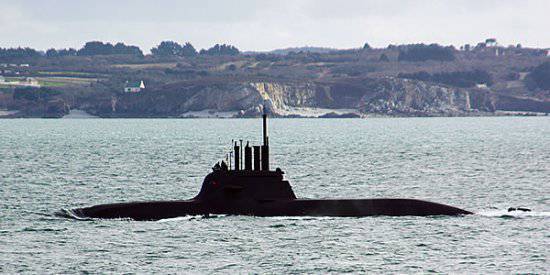
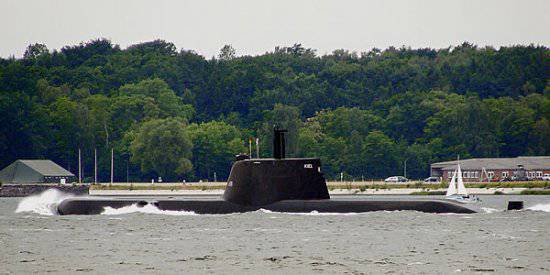
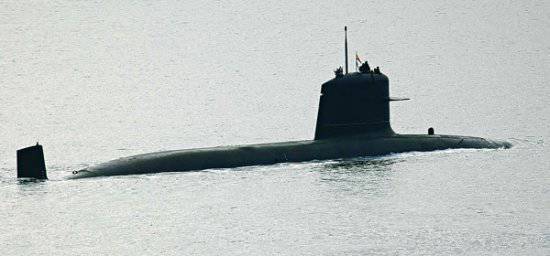
Information